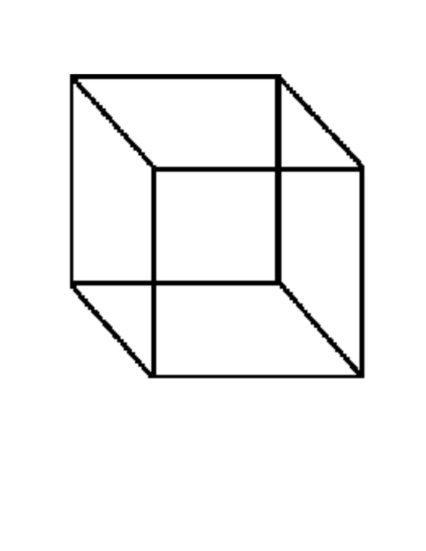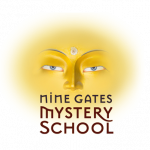Reality ... What’s Real About It?
To be free is to not be bound, and yet every day we choose to tie ourselves to our old views of reality. We can liberate these old views … and thus liberate ourselves!
What is “reality”? This essential question, long pondered in the worlds of philosophy, religion, spirituality, and physics, is experiencing renewed investigation. It appears these wisdom streams are converging into a shared view that reality is not a fixed or predetermined something. This convergence invites us to explore the mind-blowing possibilities that 1) reality as we experience it is relative—that what we perceive as real is massively influenced by each person’s nature and situation, and 2) our perceptions are not constant. n other words, reality as we “perceive it to be” changes moment by moment. And this ever-changing relative reality may not, and most often is not, the true nature of reality at all. Mind blowing!
If your view of reality is transitory and fleeting, what precipitates its transient nature? Contemplate this. Your view of what’s real changes …
- With every movement of your thoughts
- With the lightening-speed flickers of your emotions
- With your ever-changing desires in each moment
- With what you perceive as truth in support of your self-referencing ideas
- With every shift in the focus of your attention
How do we become more stable within this ever-changing world of relativity, thus becoming a grounded instrument of positive transformation? We can learn to attend our attention. We can recognize that the vibration of our attention determines how we interpret what we perceive as real. We can become more internally self-aware and learn to focus our attention deliberately. We can stay awake!
Think about this. Attention does for consciousness what our hands do for our bodies. Our attention is like a net cast out into the world to bring back a rich harvest of information. When our attention is cast out, it touches an object, interprets it dependent upon our inner state, echoes that conceptualization back … and without further investigation we label it as true. We say, “That is real. It’s my reality.”
When our attention is untrained, it is unconsciously projected out onto the world, and through our unaware conceptualizing we create ideas about reality that are usually prejudiced and far from the greater truth. Learning to bring increased awareness to where and when our attention moves and what lies beneath our interpretations are important skills for living more genuine and wakeful lives.
Alchemists were masters of paying attention to the movement of their attention. These highly skilled individuals learned that what they paid attention to was usually determined by what they thought was most important. What they thought was important is what they turned their attention toward. They also learned that what they interpreted about objects or circumstance was determined by both their inner state (their feelings, preconceptions, and thoughts) and their ability to stay open to something greater than their usual state of awareness. For example, if I focus my attention strictly on my view and needs because of my own self-identification, then I lose sight of other people and their collective needs. I become completely self-centered and perceive in every situation only what makes me happy … or why things aren’t happening the way I want them to happen. My world gets small, inflexible, and loaded with judgment.
We each have some proportion between how much of our attention is deliberate and how much is unconscious. Waking up to this proportion and developing skills that allow us to shift to a more conscious way of perceiving, is an important part of our spiritual work. In other words, we can learn to pay attention to how our attention moves and the filters we employ to perceive what we believe is real. We can train our mind to stay where we put it and our emotions to become more stable. When we skillfully engage our attention, we learn to perceive more than one view at a time, we unbind ourselves and are reminded that reality isn’t “fixed”… unless I fix it.

How can we begin this important training? First, you can use a simple, and perhaps familiar image.
When you’ve looked at this image in the past, you likely weren’t aware that the shifts in your perceptions were a result of the movement of your attention and your desire to interpret. So be the alchemist for a moment and watch the movement of your mind. Are you ready?
- First, train your mind to choose a view (e.g., is the box open at the bottom or the top). Choose and view and stabilize it. If you choose the view that the box is open at the top, train your mind to stay on that perspective. Take your time with this. Watch your mind move.
- Once your view is stable, open the aperture of your attention and take in a more holistic perspective of the image (e.g. steady your mind so that it doesn’t move toward any opening, but rather simply allows the entire image to be still without movement).
- Now let the entire page, including this print, be your even wider view. Remember this is alchemist training.
We can train our brains to take in far more than what our untrained attention points our thoughts and emotions toward. By training the mind to perceive in this way, we develop skills to open to multiple “realities” at the same time. With the above practice, you can train to shift your view at will—a box that opens at the top; a box that opens at the bottom; a solid cube with no openings; an image simply part of something much larger. You can get a taste that multiple views can exist simultaneously, without conflicting with each other. When we take this practice into our lives, we begin to see possibilities for harmonizing perceived opposites. We learn to shift our view from a limited, fixed relative reality to a more fluid, whole and integrative way of living.
And when I do these things—when I embrace reality as much more than my relative, impermanent interpretations—I become useful in a propulsive, evolutionary process of human and spirit. When I recognize I am always shaping “reality” and that when I train to bend nature with my awakened attention, I can participate in co-creating a meaningful shared reality for the benefit of all.
This is a foundational training of the Nine Gates Esoteric School.


